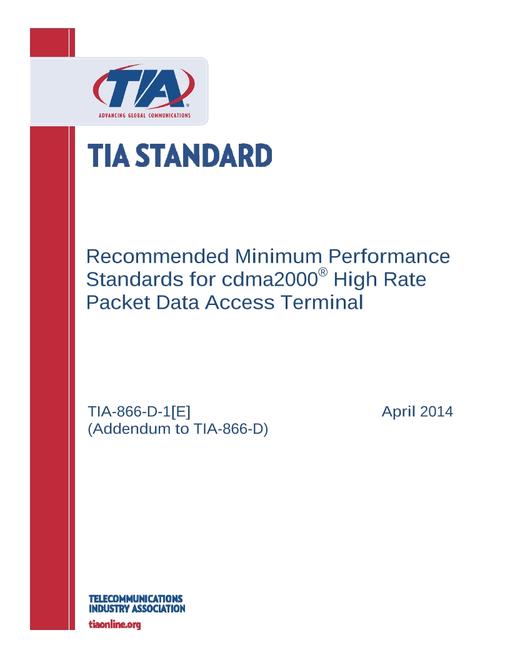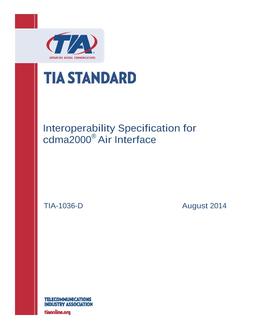-
-
Available Formats
- Availability
- Priced From ( in USD )
-
Available Formats
-
- Secure PDF 🔒
- Immediate download
-
$271.00Members pay $203.25
- Add to Cart
-
- Printed Edition
- Ships in 1-2 business days
-
$271.00Members pay $203.25
- Add to Cart
Customers Who Bought This Also Bought
-

TIA TIA-866-D-1[E]
Priced From $322.00 -

TIA TIA-1036-D
Priced From $497.00 -

TIA TIA-835.5-C-2
Priced From $123.00 -

TIA ANSI/TIA-41.512-E
Priced From $71.00
About This Item
Full Description
The Short Message Service (SMS) allows the exchange of short messages between a mobile station and the wireless system, and between the wireless system and an external device capable of transmitting and optionally receiving short messages. The external device may be a voice telephone, a data terminal or a short message entry system.
The Short Message Service consists of message entry features, administration features, and message transmission capabilities. These features are distributed between a wireless system and the SMS message center (MC) that together make up the SMS system. The message center may be either separate from or physically integrated into the wireless system.
Short message entry features are provided through interfaces to the message center and the mobile station. Senders use these interfaces to enter short messages, intended destination addresses, and various delivery options.
Message center interfaces may include features such as audio response prompts and DTMF reception for dial-in access from voice telephones, as well as appropriate menus and message entry protocols for dial-in or dedicated data terminal access. Mobile station interfaces may include keyboard and display features to support message entry. Additionally, a wireless voice service subscriber can use normal voice or data features of the mobile station to call an SMS system to enter a message.
An SMS Teleservice can provide the option of specifying priority level, future delivery time, message expiration interval, or one or more of a series of short, pre-defined messages.
If supported by the Teleservice, the sender can request acknowledgment that the message was received by the mobile station. An SMS recipient, after receiving a short message, can manually acknowledge the message. Optionally, the recipient can specify one of a number of pre-defined messages to be returned with the acknowledgment to the sender.
SMS administration features include message storage, profile editing, verification of receipt, and status inquiry capabilities. SMS administration is not within the scope of this specification.
The SMS transmission capabilities provide for the transmission of short messages to or from an intended mobile station, and the return of acknowledgments and error messages. These messages and acknowledgments are transmitted to or from the mobile station whether it is idle or engaged in a voice or data call.
The wireless service provider may offer SMS transmission to its wireless voice and data customers only, or may provide an SMS-only service without additional voice or data transmission capabilities.
This specification also provides for the broadcast of messages. All available mobile stations on a Paging Channel or Primary Broadcast Control Channel can receive a broadcast message. A broadcast message is not acknowledged by the mobile station. Broadcast Messaging Services may be made available to mobile stations on a Paging Channel or





